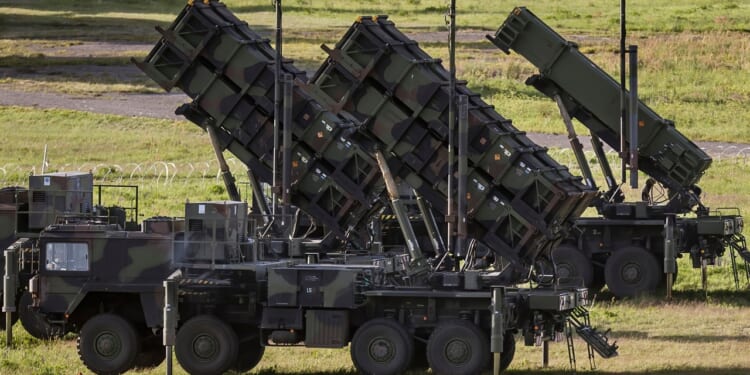Lithuania’s recent experimentation comes shortly after the country adopted a law granting its military the authority to shoot down hostile drones in its airspace.
A recent essay by Elisabeth Gosselin-Malo in Defense News details an interesting example of how Europe continues trying to rearm itself in the face of what it perceives as a growing threat from Russia. A drill conducted by the Lithuanian Army near the Belarusian border using heavy machine guns and the Saab RBS 70 NG surface-to-air missile to engage high-speed target drones.
About the Saab RBS 70 NG Air Defense System
The RBS 70 NG is an upgraded version of the older RBS 70, incorporating modern features like an integrated thermal jammer, auto-tracking sight, and compatibility with vehicle-mounted or remote-control deployment. It employs laser beam-riding guidance and is, therefore, less susceptible to certain types of jamming or decoys compared to some infrared/head-seeker systems.
An RBS 70 NG is highly flexible in terms of its deployment and can be used as a man-portable air defense system (MANPADS) or vehicle-integrated/remote-controlled system. What’s more, the weapon has a night/day capability (thanks to thermal imager and enhanced sighting system). Latvia is also experimenting with using RBS 70 NG variants in their layered air defense systems. Saab is producing a vehicle-mounted version which integrates the weapon into vehicles for more mobile/shoot-and-scoot operations.
Even though this has been used against drone swarms, it’s imperative to understand that the RBS 70 NG might not be the best system to use against these threats. Compared to the drones that Russia would deploy against NATO forces, the RBS 70 NG is more expensive.
So, this system is a good first start toward defending against drone swarms. But it cannot be only option. Indeed, NATO is experimenting with using conventional weapons, like guns, as a last resort if the RBS 70 NG fails to react quickly enough to a drone swarm.
Could Russia Launch Another Invasion of Ukraine from Belarus?
The drills in Lithuania were a clear signal to the Russians and their Belarusian allies not to attempt to violate the airspace of Lithuania.
As an aside, there remains fears on the part of NATO that the Russians could, at any time, detach roughly 350,000 of their 700,000 troops to Belarus to invade Ukraine from the north, gunning straight for Kyiv from neighboring Belarus. This would mirror Russia’s haphazard attempt to do the same during the opening days of the conflict in February 2022, which ended in their retreat back into Belarus. Nearly four years later, one assumes the Russians would be better-organized the second time around.
Still, Lithuania is signaling to Moscow and Minsk that they are prepared—and willing—to deter any Russian and/or Belarusian spillover into their territory.
Indeed, Lithuania’s recent experimentation comes shortly after the country adopted a law granting its military the authority to shoot down hostile drones in its airspace. It is yet another example of how militaries are practicing how to shoot down small, fast, and cheap drones.
The Ukraine War has demonstrated how drones have become ubiquitous on the modern battlefield. It’s a reality that not even the United States, despite having been a pioneer in drone technology (as demonstrated throughout the Global War on Terror), fully understood at the start of the Ukraine War.
The Russians and Ukrainians have both shown that drones are key to the conflict. And countering them is of the utmost importance.
Countering the Russian Drone Threat
A major problem has been the way in which Western armies counter the modern drone threat. As demonstrated during the Ukraine War, Western armies utilize complex and expensive air defense systems to shoot down cheap and easily replaceable attacking drones. The Western air defense systems and their ammunition, because of their complexity and expense, are much harder to replace once they’ve been expended…which is the point behind many of the Russian swarming attacks against the NATO-provided air defense systems that Ukraine utilizes.
NATO is finally attempting to devise low-cost ways to defend itself from cheap drones without blowing through its finite stocks of defensive systems, such as the PAC-3 Patriot missiles—which, as of the last month, have experienced a terrible decline in effectiveness from 34 percent to just 6 percent. And this is what the Lithuanian exercise was attempting to determine—how and what systems are best used against drone swarms.
Weapons used as counter drone systems, on the high end, were the aforementioned Saab RBS 70 NG surface-to-air missile. But the Lithuanians also used shotguns and machine guns to test what would work best in counter-drone attacks.
Lithuania’s testing reflects a broader shift: drones are becoming a major, evolving threat; militaries cannot rely solely on large/high-cost systems (like traditional anti-aircraft missiles) but must adopt layered, mixed-capability responses. The combination of heavy machine guns plus advanced missiles, plus updated legal and operational frameworks, is a concrete example of the changes underway amongst NATO members’ handling of the drone situation. It further underscores how even smaller states are adapting quickly to asymmetric threats.
About the Author: Brandon J. Weichert
Brandon J. Weichert is a senior national security editor at The National Interest. Recently, Weichert became the host of The National Security Hour on America Outloud News and iHeartRadio, where he discusses national security policy every Wednesday at 8pm
Eastern. He is also a contributor at Popular Mechanics and has consulted regularly with various government institutions and private organizations on geopolitical issues. Weichert’s writings have appeared in multiple publications, including The Washington Times, National Review, The American Spectator, MSN, The Asia Times, and others. His books include Winning Space: How America Remains a Superpower, Biohacked: China’s Race to Control Life, and The Shadow War: Iran’s Quest for Supremacy. His newest book, A Disaster of Our Own Making: How the West Lost Ukraine is available for purchase wherever books are sold. He can be followed via Twitter @WeTheBrandon.
Image: Shutterstock / Karolis Kavolelis.


















